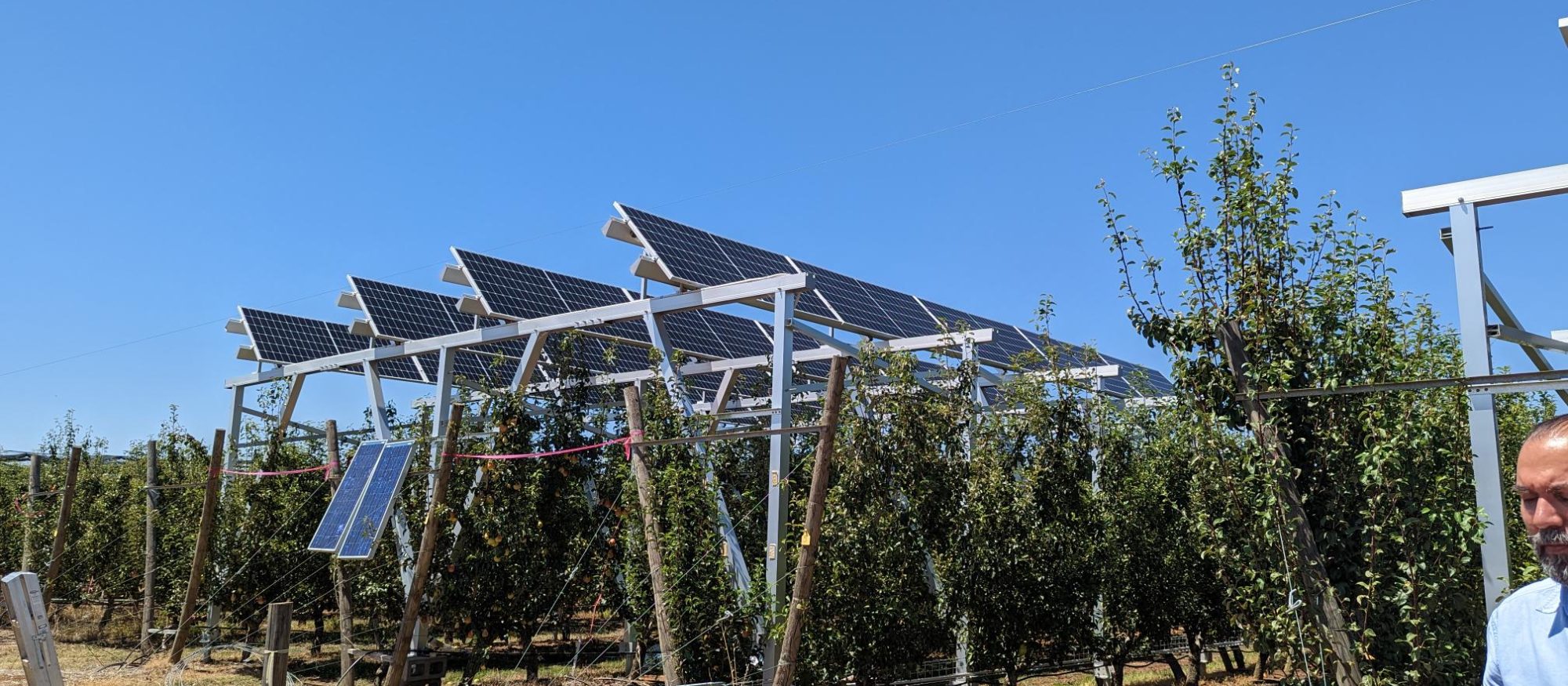Since the mid-2010s, Australia has seen the development of many solar farms, reflecting the sharp fall in the cost of solar photovoltaic (PV) technology, which is now the lowest-cost form of electricity. As the sector grows, there is increasing interest in exploring and promoting new models for complementary solar energy and agricultural production. This coupling is commonly known as ‘agrisolar’ or ‘agrivoltaics’.

The cumulative risk caused by large-scale solar development to Australian agricultural land and productivity is very low. For example, the Australian Energy Market Operator estimates that New South Wales will need approximately 20,000 MW of large-scale solar generation to replace coal-fired power stations by 2050. This would require approximately 40,000 ha of land or only 0.06 per cent of rural land in NSW. Even in the highly unlikely scenario that all of NSW’s solar generation was located on important agricultural land (which covers 13.8 per cent of the state) only 0.4 per cent of this important agricultural land would be required.[1]
Regardless, many companies working in the Australian utility-scale solar sector have committed to minimising the impacts on highly productive agricultural land (see the Clean Energy Council’s Best Practice Charter for Renewable Energy Developments) and exploring opportunities to integrate continued agricultural production into projects.
With the deployment of large utility-scale solar farms commencing in Australia from around 2015, the local experience of agrisolar practices is still developing and currently dominated by the practice of sheep grazing on solar farms. The first Australian solar farm to implement agrisolar practice was the Royalla Solar Farm, which began grazing sheep in 2015. Since then, there have been over a dozen solar farms that have introduced grazing, and it has proved to be an effective partnership for both solar farm proponents and graziers.
‘Solar grazing’, as it is known, is the most prevalent form of complementary land use for utility-scale solar farms due to the compatibility with ground-mounted solar PV panels. The integration of solar energy and grazing within a single site provides the opportunity for renewable energy operators and landholders/farmers to work in partnership to maximise the productive use of rural land and reduce operating costs for all parties.
[1] NSW Large-Scale Solar Guidelines, Large-Scale Solar Energy Guideline 2022 (amazonaws.com)

In Australia, we’ve seen solar panels and solar farm fences improve the sheep’s welfare by providing protection from the elements and predators. While these results are generally anecdotal in Australia, one recent Australian study found that the reduced windspeeds recorded within a solar farm could reduce the wind-chill index for new-born lambs. For winter 2022, this had the potential to reduce twin merino lamb average mortality rate from 20 per cent in open paddock to 12 per cent within the panel field. Furthermore, preliminary results from a wool analysis of the sheep at the Parkes Solar Farm indicated that the quality was high, even during drought conditions.[1]
Ground-mounted solar PV panels are also compatible with biodiversity and bees, as well as some types of horticulture. According to the National Renewable Energy Laboratory (NREL) in the USA, the partial shade conditions of solar installations can create favourable conditions for plants grown under or around the panels, including creating cooler conditions during the day and warmer conditions at night, and increased soil moisture levels.[2] In an Australian context, research has been conducted at Enel Green’s Cohuna Solar Farm by Agriculture Victoria to understand pasture growing conditions under the panels.
Besides ground-mounted solar PV, other forms of agrisolar include:
- elevated PV panels where the panels are raised on stilts or reinforced structures from 2.5-5 m high to allow for crops and trees to be grown underneath;
- PV greenhouses and rooftops, including innovations such as semi-transparent panels;
- floating PV systems which are compatible with acquaculture.
At present, these forms of agrisolar are typically deployed at a much smaller (i.e. non-utility) scale. This is largely due to the necessity for taller and more complex structures, as well as the larger area of land required and increased equipment costs. One example of a trial using elevated panels in Australia is the Tatura Smart Farm in Victoria, which has grown pears under several long panel arrays.[3]
Internationally, government funding programs across the world have led to a rapid increase of agrisolar from 5 MW installed capacity in 2012 to at least 2.8 GW in 2020. State-based schemes could incentivise greater use of agrisolar principles in large-scale solar projects and to go beyond demonstration-scale projects. An international example of incentives is the Solar Massachusetts Renewable Target (SMART) program. The SMART program promotes installation of agricultural dual-use solar arrays, designed to allow productive agricultural activities to continue under and between rows of solar panels, through incentives based on a fixed price per kWh of electricity generated, effectively acting as a tariff for the solar array owner.[4]
Dr Madeline Taylor, Deputy Director of Centre for Energy and Natural Resources Innovation and Transformation (CENRIT) at Macquarie Law School, has published widely on the importance of best practice regulation and policy to support an agrivoltaics sector grounded in co-benefits. Dr Taylor is researching the legal settings required to stimulate a beneficial agrivoltaics sector and recently presented at the Agrivoltaics Research and Innovation Conference run by Agriculture Victoria last week, where she spoke about the importance of defining the term ‘agrivoltaics’ in order to regulate and create incentives for the sector.
An agrisolar approach may not be suited to all solar farms, but optional support will help more industry players adopt these practices where possible. This not only provides potential co-benefits for both solar and agriculture, but also helps to bring the community along the renewable energy journey that is happening in their local areas.
See the Clean Energy Council’s Australian Guide to Agrisolar for Large-Scale Solar for more details.





